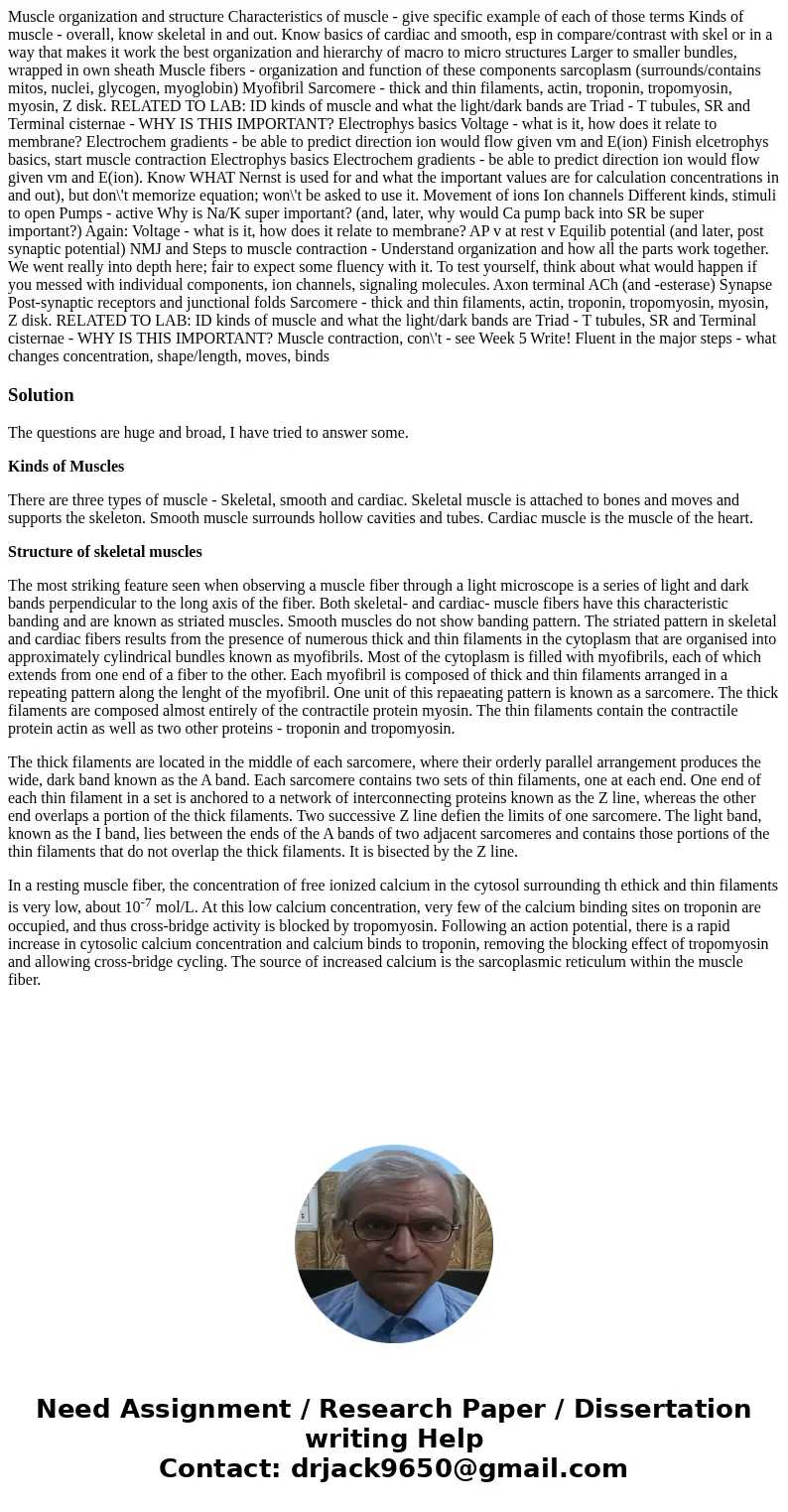Muscle organization and structure Characteristics of muscle
Solution
The questions are huge and broad, I have tried to answer some.
Kinds of Muscles
There are three types of muscle - Skeletal, smooth and cardiac. Skeletal muscle is attached to bones and moves and supports the skeleton. Smooth muscle surrounds hollow cavities and tubes. Cardiac muscle is the muscle of the heart.
Structure of skeletal muscles
The most striking feature seen when observing a muscle fiber through a light microscope is a series of light and dark bands perpendicular to the long axis of the fiber. Both skeletal- and cardiac- muscle fibers have this characteristic banding and are known as striated muscles. Smooth muscles do not show banding pattern. The striated pattern in skeletal and cardiac fibers results from the presence of numerous thick and thin filaments in the cytoplasm that are organised into approximately cylindrical bundles known as myofibrils. Most of the cytoplasm is filled with myofibrils, each of which extends from one end of a fiber to the other. Each myofibril is composed of thick and thin filaments arranged in a repeating pattern along the lenght of the myofibril. One unit of this repaeating pattern is known as a sarcomere. The thick filaments are composed almost entirely of the contractile protein myosin. The thin filaments contain the contractile protein actin as well as two other proteins - troponin and tropomyosin.
The thick filaments are located in the middle of each sarcomere, where their orderly parallel arrangement produces the wide, dark band known as the A band. Each sarcomere contains two sets of thin filaments, one at each end. One end of each thin filament in a set is anchored to a network of interconnecting proteins known as the Z line, whereas the other end overlaps a portion of the thick filaments. Two successive Z line defien the limits of one sarcomere. The light band, known as the I band, lies between the ends of the A bands of two adjacent sarcomeres and contains those portions of the thin filaments that do not overlap the thick filaments. It is bisected by the Z line.
In a resting muscle fiber, the concentration of free ionized calcium in the cytosol surrounding th ethick and thin filaments is very low, about 10-7 mol/L. At this low calcium concentration, very few of the calcium binding sites on troponin are occupied, and thus cross-bridge activity is blocked by tropomyosin. Following an action potential, there is a rapid increase in cytosolic calcium concentration and calcium binds to troponin, removing the blocking effect of tropomyosin and allowing cross-bridge cycling. The source of increased calcium is the sarcoplasmic reticulum within the muscle fiber.

 Homework Sourse
Homework Sourse